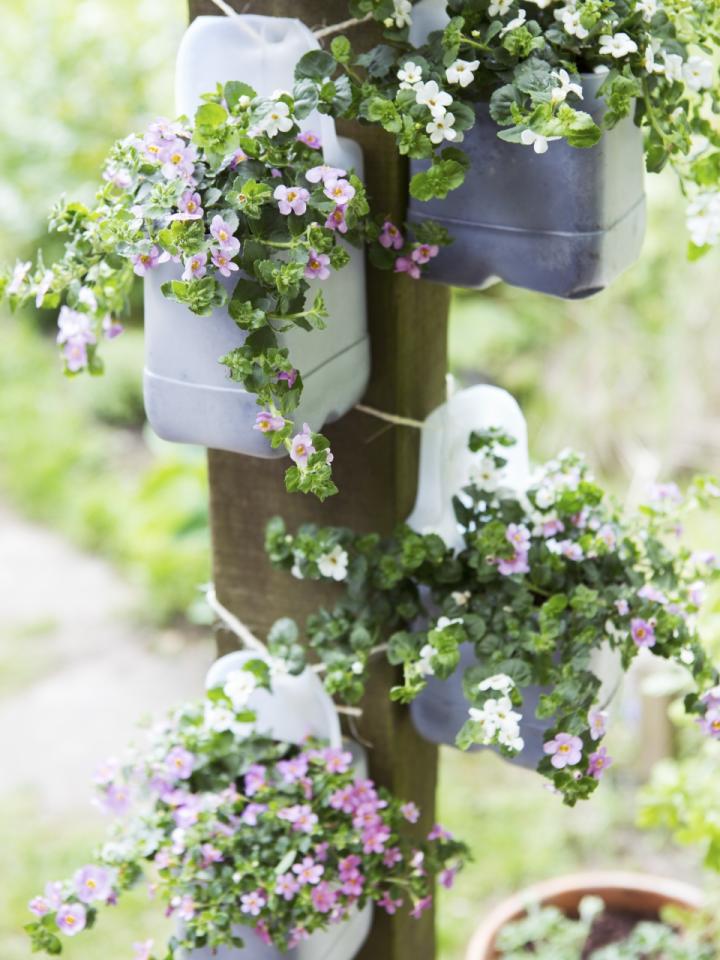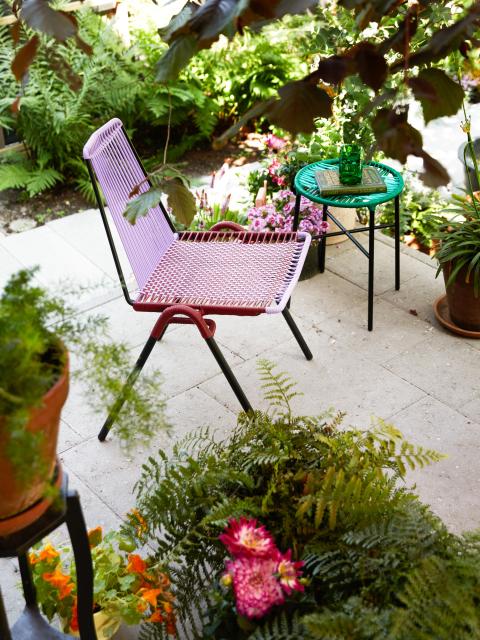Colours and shapes
Bacopa (Sutera cordata) is a jack of all trades. Hanging, as ground cover, creeping everywhere whilst flowering delightfully – nothing is beyond the power of this compact, profuse summer bloomer. The green leaves are small and heart-shaped, the flowers have five petals and are white, blue or pink. They appear all over the plant so that it looks like there’s a carpet of colour lying across the foliage. Bacopa flowers from May to October and thrives in hanging baskets, pots and tubs where the flower-laden stems trail far over the edge. Bacopa can also be planted in the soil as ground cover.
origins
Bacopa is a member of the plantain family (although its no relation to the banana-like fruit) and is native to South Africa. You probably wouldn’t recognise it there, since in the wild it grows as a bush. The plant was first described in 1800, and botanists have been squabbling about the name ever since because they can’t agree how it should be classified. We’re sticking to the most common name: Bacopa, which has no special meaning. There’s also a water plant version which is used in aquariums.
Bacopa trivia
- The Latin name Sutera cordata refers to Swiss botany professor Johann Rudolf Suter, 'cordata' refers to the heart-shaped green leaves.
- In herbal medicine Bacopa is believed to enhance memory.
- The plant is incredibly popular in India, where all sorts of divine properties are attributed to it.







